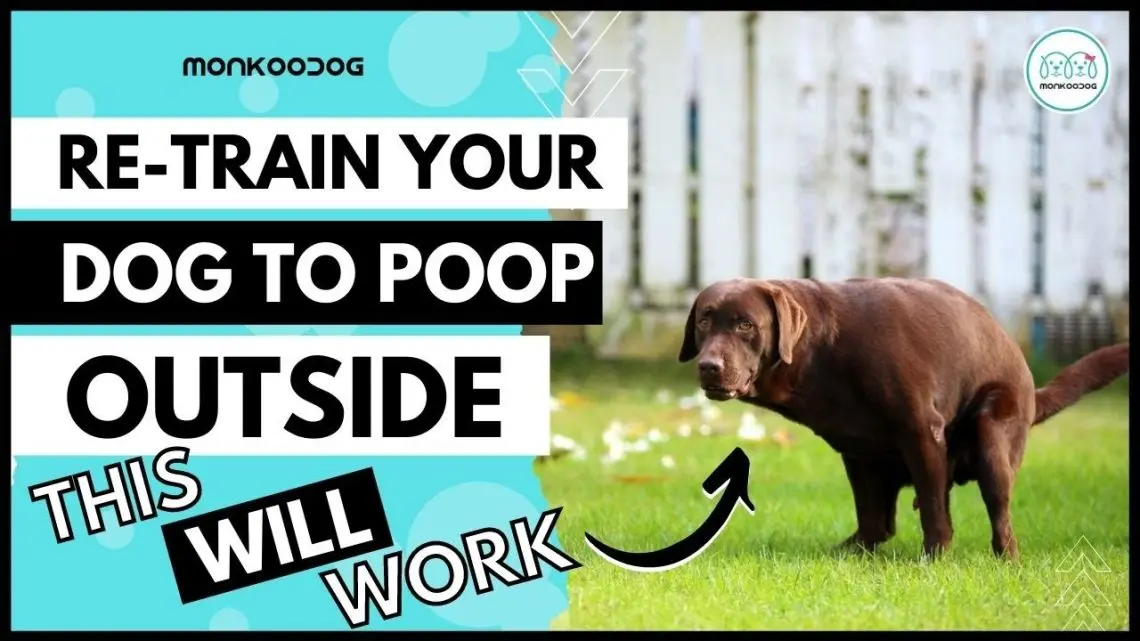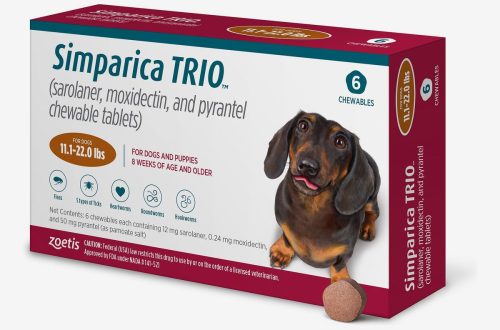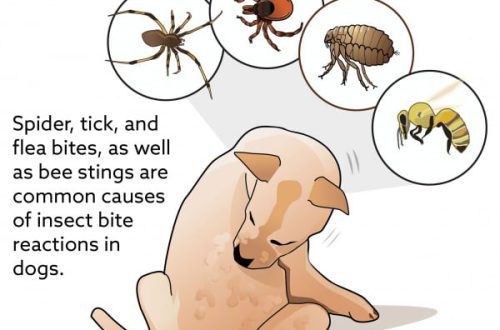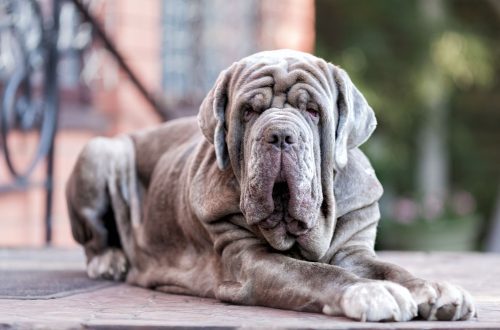
How to train a dog to go to the toilet outside
Contents
General information
Toilet training a dog is the most important step in training. Any owner feels much greater joy and satisfaction from communicating with a four-legged friend, if his pet does not spoil anywhere, you don’t need to run after him all day with a rag and think about how to remove fetid odors from the floor, sofa or carpet. A regulated toilet issue is one of the essential components of a good relationship between a dog and its owner.
Teaching a dog to go to the toilet outside is simple and difficult at the same time. In fact, you need to focus on just two things: preventing flaws at home and praising your need while walking. The difficulty lies in the fact that you will have to follow the rules every day, without violating the regime, showing restraint, calmness and goodwill towards the pet. The skill must be firmly fixed in the mind of the dog so that it is not afraid of the street and does not bring “surprises” with it. To do this, both the dog and the owner must acquire healthy habits that will become part of their daily activities.
The scheme below works for both puppies and adult dogs that were not cared for by previous owners, or if for some reason they had a “rollback” in education. In this case, the following nuances should be taken into account: older dogs may not go to the toilet longer than puppies, due to the larger volume of the bladder, but in the event of a fiasco, cleaning will be larger; adults often have to be retrained, and babies are a blank slate, which simplifies the task, since they do not have to first forget the old patterns of behavior.
How to know when it’s time to take your puppy outside
In the process of potty training your dog, ideally you should take your dog outside every time he needs to pee. There are both standard situations and spontaneous moments that the puppy will try to signal to you. The sooner you learn to understand dog hints, the sooner your four-legged friend will stop dirtying floors and carpets. Look closely at your dog, learn to read its behavior patterns.
The selection contains the most common cases when a dog wants to go to the toilet.
- After waking up.
- The puppy ate or drank.
- He starts to sit down.
- He has just been released from a cage, playpen, aviary, bathroom, small room, or other enclosed space.
- The dog gnawed on some object for a long time, and then got up and fell into a stupor.
- The pet became more active and excited than usual.
- And vice versa, he looks confused, lost, does not know where to put himself.
- The dog has moved away from the place where he used to play or rest, sniffing the floor.
- The puppy came to where he crap earlier, began to sniff the floor.
- Basically every time he sniffs the floor.
- The dog began to often look at the door or runs around the corridor, as if he wants to leave the apartment.
- She walks from side to side and whines.
- The puppy is refusing food or play.
- When a pet plays for a long time and with excitement – especially with other pets or people – he can become so immersed in the process that he forgets about finding a suitable location for the toilet. Instead, the baby will simply sit down in place when it itchs. To prevent such an accident, alternate prolonged games with toilet breaks.
Take your pet outside at least every hour he is active. In the morning and evening, you can go out even more often. This is absolutely normal during the learning process.
Detailed plan for dog toilet training
Potty training a dog outside is a step-by-step process. Luckily, most dogs try to have a designated place to urinate and try not to poop where they eat and sleep, so dogs are great at learning the standard plan. First, make sure that you are in control of your pet, that is, it is always in one of three positions:
- on the street where you follow him;
- in an apartment / house under your supervision;
- in a confined, relatively small space, such as a cage, playpen, or small room.
Depending on the situation, you must take certain actions. Let’s consider each case separately.
1. You walk your dog outside.
When spending time together with a pet on the street, you look after him and, accordingly, you know if he did his business before returning home. You can reward the dog for going to the toilet outside so that he understands that such actions on his part are correct.
Prepare treats for your pet in advance, they can be hidden in a jacket pocket, trousers or bag. Make sure the treats are really good – dog-friendly. Just as humans are more addicted to a piece of cake or chocolate than broccoli, dogs have their own cravings. For many animals, pieces of low-fat cheese or meat are an excellent reward. Special dry fragrant treats are also very effective – by human standards, they can be compared to cookies. Ordinary dry food pellets, which a dog receives every day, may not be as in demand as carrots are for children.
Find a specific spot near the house where you would like your dog to go to the bathroom. If at first you bring the puppy to the same corner, then over time he himself will resort there. When you arrive at the selected location, stop and wait until the dog begins to urinate. It should be fairly flat, but at the same time a secluded space.
The main thing is not to look at the pet intently while it sniffs the ground and “shoots”. The animal may take a direct look for your desire to communicate or play, so it will not get down to business. If eye contact has already been made, and the dog is interested in you, or the inviting smell from your pocket, just look somewhere to the side with your arms crossed over your chest. The pet will quickly lose interest in you and return to exploring the place for the toilet.
Wait for the puppy to relieve himself. Once he’s done, praise him and give him the treat he saved. While the dog is eating, you can stroke him, saying that he is well done and calling him a good dog.
Positive food reinforcement is an important part of a dog’s toilet training plan, but not all dog owners are aware of it. Many give the pet a tasty reward when he has already emptied himself and ran back to them. But look at it from the point of view of a puppy: in his mind, he received a reward for coming to the owner. The award must be received immediately, which means that at first you will have to constantly be near the dog on the street, without leaving it. In some cases, it is the timing of the treat that determines whether the puppy will toilet train outside.
Kind words, spoken with enthusiastic intonation, also make puppies very happy, but when praise is combined with food encouragement, they still learn faster. Some owners don’t want to use treats, but this is a really effective tool, so why not use it? Judge for yourself: it’s one thing if they tell you at work: “You’re done, thank you!”, and quite another – “You’re done, thank you, keep the award!”. Over time, when the puppy begins to walk steadily on the street, you will begin to give treats every once in a while, then even less often, and when the process reaches automaticity, you can refuse them.
2. The puppy is at home under supervision.
In an apartment or house, you must constantly look after the dog. To do this, you do not need to look at the pet point-blank, without looking away – so he can get scared. It is enough to glance at him with half an eye while doing your own business, for example, making tea or listening to an audiobook. A puppy who finds himself in a new home can be compared to a baby who has just learned to walk. In order for the child to disappear from sight, a second is enough. Likewise, a puppy, previously quiet and calm, can suddenly think of something of his own and run to make puddles. To make it easier to follow him, you can close the doors or put partitions in the openings, limiting the room for maneuvers to 1-2 rooms. If your dog is small or medium in size, then you can tie it to yourself by tying a leash around your waist, then it will not be able to slip away while you are not looking.
If you look after your dog poorly, constantly missing the moment when he goes to the toilet, especially at an early stage of accustoming to the street, then training can be seriously delayed or completely useless. It is the responsibility of the owner to take the dog out to relieve himself in time. Remember, initially the puppy does not realize that it matters a lot to people where he goes to the toilet.
3. The dog is left to itself in a cage or room.
In those moments when you are busy with your own affairs and cannot fully look after the puppy, you should leave it in a limited area. For this, a playpen, a cage or a small room, ready for testing by a dog, is suitable. If the space is small, then the likelihood that the puppy will shit there will be less, because the baby will instinctively try not to dirty the area where he sleeps or eats. In addition, the limited space will prevent the dog from urinating in any other places in the apartment, which will avoid the formation of bad habits, such as shitting in the kitchen or marking in the hallway.
The presence of a cage for a dog causes conflicting feelings among the owners, however, it should be said that many puppies are comfortable sleeping in enclosed spaces that resemble a den if they are accustomed to this from childhood. It is advisable to place the cage in the bedroom so that at night the pet feels that you are next to him. If your ward is one of the crate-intolerant dogs, or you just don’t want to use one, then leave the puppy in a small room or in the kitchen, isolating his habitat with a partition. You can also use the playpen, in which a bowl of water, a bed and various toys will be waiting for your pet. Keep in mind that the playpen is only suitable for small breeds of dogs, since medium and large animals can turn it over and get out.
Make sure in advance that the area allocated for the dog has a floor covering that is easy to clean, then the mistakes that almost all puppies make at first will not upset you too much. Whatever you use – a cage, an playpen or a bed – they should be cozy and comfortable for the dog, that is, it is too cold or hot there, and the size allows the animal to sleep comfortably. Make sure that the dog is not near the window, because he may be overly interested in what is happening on the street, and overly worried, or, conversely, frustrated.
In order for the puppy to get used to the cage and perceive it as his safe corner, and not as a trap and a form of punishment, act according to the following scheme.
Step 1. Stock up on treats and toss them inside the cage for the puppy to enter and eat the bait. If he began to suspect something and is afraid to enter, put a treat on the threshold. Gradually, you will be able to throw pieces of food farther and farther. The dog must freely enter the cage and leave it whenever he wants. Thus, climbing inside will become associated with play and reward. Do this exercise 3-5 times, repeat several times a day.
Step 2. As soon as the puppy gets comfortable and runs freely into the cage, wagging his tail, it’s time to close the door behind him. Start with 2-3 seconds. After a couple of days, put in a treat, close the door, then feed your pet through the bars, and finally let him out of the cage.
Step 3. Now it’s time to leave the puppy in the cage for a longer time. To do this, you can use a toy like Kong. It is a ball with a hole for food. The dog will chew on the toy and periodically take out pieces of food from there, which will definitely interest him more than the cage door. If there is no Kong, you can use other items that the pet likes and usually distracts him. When the puppy is busy playing or eating treats, go somewhere else for half a minute to a minute. Then open the cage door and call the puppy outside. If you practice this regularly, increasing the time intervals, the dog will learn to be calm in the cage.
To make it easier for the puppy to get used to the sleeping place, you can put a towel on it, on which he slept at the breeder with his mother, brothers and sisters, or put your own T-shirt. In extreme cases, a small soft blanket or fluffy toy will do.
It is wise to place your pet in a crate when you see him begin to fall asleep, then it will be easier to develop the habit of sleeping in a certain place. Usually dogs want to sleep after running and playing enough. They nod or lie down on the floor as if an internal switch had tripped. If you missed the moment, and the baby managed to fall asleep somewhere in the apartment, carefully take him in your arms and put him on a bed. Do it as quietly as you can.
Now you can use the cage both at night and during the day – in those moments when you cannot look after the dog at home and do not walk with it on the street. As for the location of the cage, it is preferable that it be in your bedroom. At night, the pet will feel your presence nearby, smell you, hear your breath, which will soothe him. The puppy may never spend the night alone at the breeder’s, so your proximity will make adaptation faster. During the day, the cage can be moved to another part of the apartment, if it is more convenient. The only thing is that it is undesirable to put it on the aisle, where the dog can often be disturbed by household members passing back and forth.
What to do if the puppy has passed the need in the cage? Do not worry, clean up so that there is no unpleasant smell left and analyze what caused the failure. Has the dog been locked up for too long? Did she go to the bathroom before you put her in the cage? Maybe her diet or drinking regime has changed? Do you walk your puppy often enough? Are there any medical problems that prevent sufficient time intervals?
Even if you do not understand why the embarrassment occurred, do not be discouraged. Failures happen to everyone. Any dog can make a few mistakes during the training process. If the situation looks like the puppy specifically relieves himself in a cage, move him to another fenced area or a small room.
There are animals that accept the sleeping place prepared for them immediately, while others are capricious or afraid when the owners are about to put them to bed. This is worth dwelling on, as it is extremely important to distinguish whether the puppy is whining or barking, because he knows that in this way he will achieve a way out of the cage, or he is signaling that it is time for him to go outside and his needs cannot be ignored. Most often, you can ignore the dissatisfaction of the puppy when you have just put him in a cage, and he recently relieved himself. Many pets go to bed within a few minutes and fall asleep immediately. But if a quiet and balanced baby suddenly starts whining in the middle of the night, get up and take him outside to find out if he needs to go to the toilet. See how he behaves in the following nights. If you realize that the puppy does not need to relieve himself, and he wakes you up only to play, then in the future ignore his calls. If he got into the habit of going to the toilet at night, then each time wait more and more time before going out with him. It is especially worth listening to dogs that start crying at 5-6 in the morning – the likelihood that they need to go to the toilet is the highest. Try to let your pet out of the cage at the moment when he calms down, and does not bark, so that the dog does not think that he can achieve what he wants, just by raising his voice. Wait for a pause or make some non-terrible sound yourself that will confuse the pet and make it quiet, pricking up its ears.
Puppies usually love their cages and get used to them quickly. This place can be compared to a bedroom for a person. But there are also individuals who do not fit this option. When they enter the cage, they breathe heavily, drool, bark with anguish and do not calm down. These puppies will be better off staying in a small room. After all, they haven’t read articles about how they should love den-like spaces. But this category of pets is in the minority, so do not give up accustoming a dog to a cage if it just fussed there for a couple of minutes. You need to take the puppy outside immediately after opening the cage – otherwise why did he endure it?
Gradually expand the freedom of movement of your dog in the house around the apartment. Spend time with your pet in different rooms, leaving your scent in them, train there, or just play.
4. Other situations
They simply don’t exist! In the process of accustoming to walking out of need on the street, the puppy should always be in one of 3 positions: with you for a walk, under the supervision of the house, or alone in a limited safe space.
Make no exceptions. If you don’t make mistakes, toilet training will be effective and won’t take long. Literally a month of effort – and you will get a comfortable life with a clean dog.
What you need to know about the physiology of puppies
Puppies cannot fully control their bladder until about 20 weeks of age. In this regard, during the period of wakefulness, they need to be taken out to relieve themselves approximately every hour. As a general rule, males can tolerate longer than females.
If the dog is a small breed, or only 7-12 weeks old, she may need to go to the toilet even more often. Sometimes it happens that especially active, playful, pets winding circles around the house will need to go “on business” as early as a quarter of an hour after the last promenade.
As for the representatives of medium and large breeds, their bladders are larger, so they can endure longer. For them, there is a way to determine the approximate number of hours a puppy is able to hold back. Add 1 to the dog’s age in months. For example, a four-month-old golden retriever can be in a cage for no more than 5 hours in a row. This is a general formula, so the time period may vary for different puppies.
Dogs become accustomed to urinating outside and become fully reliable between the ages of 6 months and 3 years, depending on size, sex and personality.
Metabolism in dogs is most active in two daily intervals: first in the morning, after sleep, and then after lunch and before the evening. At these moments, the owner should be on the alert.
You need to bring the puppy to the face immediately after he has eaten or drank, that is, 1-2 minutes after the end of the meal or water.
It is important to feed the dog at the same time, do not deviate from the regimen. In this case, she will walk in a big way like clockwork.
During sleep, the puppy can hold back much longer than during the day. He does not need to be woken up and taken out into the street every hour. But do not think that since the pet suffered so much time without a toilet at night, now he will do without frequent walks during the daytime. Dogs, like humans, have a faster metabolism when they are in motion. Imagine that you sleep peacefully for 8-9 hours at night, and you do not need to get up to go to the toilet, but during the day it will be very difficult to maintain such an interval.
The most common problem that worries new dog owners is that the puppy does not go to the toilet on the street, but when he returns home, he relieves himself. If this trend occurs, study the typical scenarios of your puppy’s behavior. It is considered normal if the baby went to the toilet on the street, returned home, and then again wanted to go out after 10 minutes. This is due to his physiological characteristics, he does not do so out of harm. If the baby does not relieve himself outside at all, he may need a longer walk. In this case, walk around together in the fresh air, play enough, wait a few minutes and, if nothing happens, go home. In the apartment, do not allow the puppy to move freely where he pleases. Watch your pet carefully, or better yet, put him in a confined space. After 10 minutes, let the dog out and go outside again.
Sometimes puppies don’t go to the toilet at all when you take them outside. Keep trying until you get results.
Even if the puppy does “toilet work” in your private fenced area, it will be useful to take him out on a leash occasionally. So he will get used to and be able to go to the toilet on a leash in adulthood. This skill will come in handy if you later need to leave your pet for a while with relatives, friends or in a clinic. You can also experiment with different types of surfaces, for example, teach your dog to pee on the ground, grass, sand.
In case of a mistake, first of all deal with the smell, not the stain. By dog logic, if something smells like a toilet, then it is a toilet. Household chemicals, ammonia cleaners, and vinegar can only exacerbate the problem. Use enzymatic products that neutralize odors. In a pinch, baking soda will do.
Be patient, don’t punish your dog for mistakes. Mistakes happen to everyone. Analyze what went wrong and try to avoid similar situations in the future. Don’t forget that both of you are doing your best!





